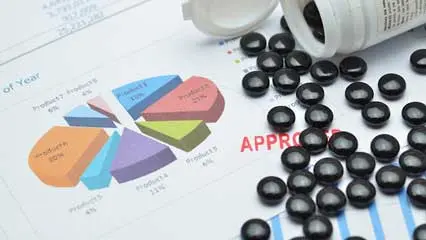
Plasma Fractionation Market Share, Trends, Growth Drivers, Revenue, Business Challenges, Opportunities and Future Competition Till 2034: SPER Market Research
Category :
Healthcare
Published: Jan-2025
Author: SPER Analysis Team
Plasma Fractionation Market Share, Trends, Growth Drivers, Revenue, Business Challenges, Opportunities and Future Competition Till 2034: SPER Market Research
Global Plasma Fractionation Market is projected to be worth 82.93 billion by 2034 and is anticipated to surge at a CAGR of 8.73%.
Plasma fractionation is a manufacturing method that separates plasma proteins to provide various medicines. Human plasma fractionation provides the foundation for generating a variety of life-saving protein medicines, including coagulation factors, albumin, immunoglobulins, protease inhibitors, and more. These plasma-derived pharmaceutical preparations are commonly used in clinical settings to replace intravenous protein therapy for the treatment of immunological, hemostatic, metabolic, and other life-threatening conditions.
Drivers: Chronic diseases are becoming more common, especially among the elderly, which is one of the major drivers propelling the market's rise. Immunoglobulins and coagulation factors are two examples of plasma-derived medicines that are frequently needed for problems like immunological deficiencies, respiratory ailments, and bleeding disorders, which are more common in older persons. Plasma therapies will become increasingly popular as the world's population ages, particularly in areas like Europe, North America, and portions of Asia where the population is aging quickly.
Request For Free Sample Report @ https://www.sperresearch.com/report-store/plasma-fractionation-market.aspx?sample=1
Challenges: The emergence of recombinant therapies as an alternative to plasma-derived medicines has slowed market growth. The recombinant product performance of plasma-derived products is achieved by expressing similar proteins in genetically modified cells. It is safer than plasma-derived products because it prevents the spread of bloodborne diseases. The emergence of recombinant therapies as an alternative to plasma-derived medicines has reduced its expansion. In recent years, numerous plasma-driven treatments have developed a wide range of recombinant choices. Plasma-derived products are more immunogenic than recombinant compounds employed as prophylactic measures. In addition to these, the development series contains a large number of longer-acting replacement factors.
Market Trends: Technological advances and continuous research in the realm of plasma-derived products are important factors in driving market expansion. Plasma treatments are becoming more efficient and safer thanks to new and better procedures for fractionation, collection, and purification. This has resulted in the creation of more tailored medicines, which are extremely effective in treating specific illnesses. For example, advances in immunoglobulin therapy have enabled more individualized treatment approaches, resulting in better patient results. Furthermore, advances in recombinant technology offer alternatives to standard plasma products, hence broadening therapeutic possibilities. As these technologies advance, they are projected to play an important role in driving the growth of the plasma therapies market.
Global Plasma Fractionation Market Key Players:
Grifols S.A, CSL Limited, Takeda Pharmaceutical Company Limited, Octapharma AG, Kedrion S.p.A, LFB S.A, Biotest AG, Sanquin, Bio Products Laboratory Ltd, and Intas Pharmaceuticals Ltd are just a few of the major market players that are thoroughly examined in this market study along with revenue analysis, market segments, and competitive landscape data.
For More Information about this Report @ https://www.sperresearch.com/report-store/plasma-fractionation-market.aspx
Global Plasma Fractionation Market Segmentation:
By Product: Based on the Product, Global Plasma Fractionation Market is segmented as; Albumin, Immunoglobulins, Coagulation Factors, Protease inhibitors, Others.
By Method: Based on the Method, Global Plasma Fractionation Market is segmented as; Centrifugation, Depth Filtration, Chromatography, Others.
By Application: Based on the Application, Global Plasma Fractionation Market is segmented as; Neurology, Hematology, Oncology, Immunology, Pulmonology, Others.
By End User: Based on the End Use, Global Plasma Fractionation Market is segmented as; Hospitals & Clinics, Clinical Research, Others.
By Region: This research also includes data for North America, Latin America, Asia-Pacific, Europe, Middle East & Africa.
This study also encompasses various drivers and restraining factors of this market for the forecast period. Various growth opportunities are also discussed in the report.
Would you like to view the sample pages?
Get Sample PagesExplore Related Reports
Domains Served
Our Global Clients
Our data-driven insights have influenced the strategy of 200+ reputed companies across the globe.




































